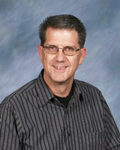 Jeff Tunnell
Jeff Tunnell
My son taught me how to fish. We attended a brief class with local lake-district personnel. They gave us some primary instructions, gave us poles and tackle boxes filled with stuff useful for fishing, issued our licenses and off we went. Following the instructions received, our excitement grew at the prospect of actually catching a fish as a trophy of our learning! In suprisingly short order, we pulled a nice rainbow trout from the water. Holding it carefully we removed the hook, smiled in triumph and then asked… what do we do with it? No thought had been given to the next steps necessary for actually keeping it. Dumbfounded by our combined ignorance, our new friend left in a hurry.
As fishers of men, we should give some thought to the differences between ‘assimilation’ (catching) and ‘formation’ (keeping)? When Jesus attracts one of His children to Himself, a cell-based church must have a strategy in place to assimilate them into Christian community and begin a process of spiritual formation for this newly established life in Christ. Without doubt, the Holy Spirit is the guide for the new believer’s success in both of these processes and it is likely (and my hope) that He used the members of a cell to befriend and evangelize this person.
Randy Frazee in “The Connecting Church” offers: “The church must be careful not tot confuse an assimilation strategy for church involvement with a spiritual formation model for community building. Both are necessary, but they are very different. An assimilation strategy defines how one gets involved in the life and programs of a church; a spiritual formation model defines the essential outcomes the church is attempting to get working into the lives of its members.”
I admit, I have confused the two along the way. For example, keeping records of how many are in cell groups is an easy shift from keeping attendance on Sundays. But I must keep an eye on the continuing spiritual formation process in each of those lives as well. Having a pre-determined strategy, normally referred to as a training or equipping track, is a must.
What do you think?


 by Joel Comiskey
by Joel Comiskey


 prayer requests on his behalf through the International Cell Church Prayer Network which I coordinate, as well as through the cell groups of our church. We have been honored to provide funds for Bibles as well as help support some of the branch church pastors with financial gifts but what happened next still boggles my mind.
prayer requests on his behalf through the International Cell Church Prayer Network which I coordinate, as well as through the cell groups of our church. We have been honored to provide funds for Bibles as well as help support some of the branch church pastors with financial gifts but what happened next still boggles my mind.